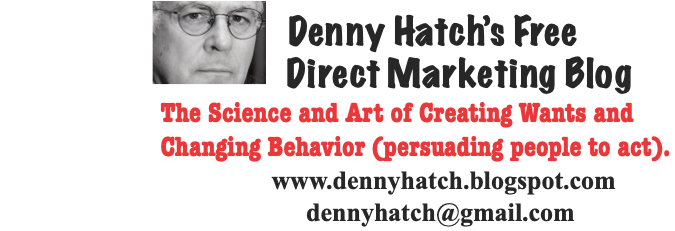http://dennyhatch.blogspot.com/2022/04/154-bawdy-jokes-patter-songs-review.html
#154 Blog Post – Tuesday, 26 April 2022
Posted by Denny Hatch
The Fascinating Review of
A One-of-a-Kind New Book
This past December the book pictured above went on sale.
Until this year, all books looked more or less the same since Johann Gutenberg’s Bible was produced using the revolutionary printing press in 1455. For over 500 years, hardcover and paperback books had protective decorated covers with pages bound inside containing words and static illustrations.
Today eBooks can magically appear on the screen of your iPhone, iPad, laptop, desktop as Kindle or Nook books. You’ll get text and static illustrations just like we always did. The differences: no expensive paper, printing, binding and returns. No heavy, clunky physical book to lug around. Plus, instant gratification. Order an ebook from 5,000 miles away and you can start reading it in seconds.
What’s more, publishers are happy to send you a few sample chapters to help make up your mind. Just ask!
During the COVID-19 months when we were hunkered down in self-isolation and canceled trips, I got the idea for the book of patter songs to occupy my mind, cheer me up and maybe cheer others up. Patter songs are a genre that first fascinated me when I was in 5th grade.
I started prowling around YouTube to see if I could find some patter songs and discovered hundreds of performances going back over a century.
It hit me that maybe I could combine printed text with YouTube illustrations. Not static stills, but short moving pictures—videos of beloved performers over the past 100 years. The idea that I could tell the story of 87 patter songs and provide a link that would instantaneously bring on a 112 live performance intrigued me.
Would This Oddball Format Fly? I Had No Idea.
So, I wrote, designed and published the ebook packed with over 6-1/2 hours of YouTube entertainment—and priced it at $3.99. Obviously I didn’t do it for money. It was therapy. Was this radical concept viable?
Amazingly Rebecca Gregory and Diane Lowery, two reviewers for the Online Book Club, completely understood this highly unusual publishing concept—and liked it! My sincere appreciation goes to both of them for their kind treatment of this oh-so-senior citizen.
Bawdy Jokes & Patter Songs:
A Review by Rebecca Gregory
20 Apr 2022, 04:41
[Following is a volunteer review of
"Bawdy Jokes & Patter Songs" by Denny Hatch.]
NOTE: The
reviewer mentioned four performances
in her review. I took the liberty of inserting links so
readers can click on the blue in type and the videos
will appear. —DH
4 out of 4 Stars
In 2019, the world as we knew it changed forever. That is when the COVID-19 virus began its killing spree. Face masks, lockdowns, isolation and severe depression became the norm. Bawdy Jokes and Patter Songs by Denny Hatch was written with the hope of providing some solace for this time of suffering. The book begins with three jokes told by Buddy Hackett when he was a guest on the Tonight Show. A YouTube link is also provided for the purpose of watching on your phone or computer. Hatch incorporates several YouTube links throughout the book and in his introduction Hatch even writes, “This is your introduction to over one hundred YouTube video delights!”
Before he continues with more jokes, Hatch gives some background information about bawdy jokes and how he came across many of them. He next explains what patter songs are and the history behind their origins. He also mentions his experience when he played a role in a musical during grade school, which fanned his interest in these unusual songs. The first musical performance he attended contains a patter song that was performed by Alistair Cook and Martyn Green. He relives this experience and provides a link so that the reader might experience some of the same joy. There are over 131 patter songs in this book. Each of them has a YouTube link, which make them all the more enjoyable. Hatch also provides lyrics for them unless they still have copyright protection.
Bawdy Jokes and Patter Songs is a very amusing and entertaining book. I laughed out loud over many of the jokes and even shared some with my friends and family. Furthermore, it is full of information. This shows how much research Hatch did, especially concerning the patter songs. Some of the information included is background material for the authors, actors and songs. Because of how fast they are sung, many patter songs are difficult to understand. Therefore, being able to read the lyrics adds to the amusement that they provide. The YouTube links also let the reader experience the songs using site and sound, which enhances the songs even more.
Not only have I saved jokes to use later, I saved links to many of the patter songs. A few of my favorites are The New Math and Smut, both by Tom Lehrer, He’s His Own Grandpa by Phil Harris and Mr. Bojangles sung by Sammy Davis Jr. Another song I thoroughly enjoy is The Babbitt and the Bromide by George and Ira Gershwin. It is a song and dance routine performed by Fred Astaire and Gene Kelly. Danny Kaye sang several songs as well. If I mention all of the songs I really enjoy, I will need to write a book of my own.
I have no negative comments about this book – I enjoyed every page. I only found five grammatical errors and the author used some profanity but that is expected for this type of book.
I give Bawdy Jokes and Patter Songs by Denny Hatch a rating of 4 out of 4 Stars. It is very captivating and a complete pleasure to read.
I recommend this book to any adult that enjoys jokes and is not offended by minor sexual content and profanity. I also recommend it to those who enjoy musical performances and those with fond memories of actors, dancers and singers of the recent past.
Takeaways to Consider
• Available at Amazon
Kindle — ($3.99)
Paperback 8-1/2” x 11” ($12.99)
• Available at Barnes & Noble
Nook Book — ($3.99)
Paperback 8-1/2” x 11” ($12.99)
###
Word Count: 1025







